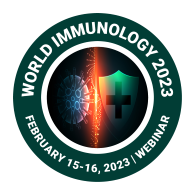DNA Damage, Repair, Replication and Transcription
DNA repair may be an assortment of processes by that a cell identifies and corrects injury to the deoxyribonucleic acid molecules that write its order. In human cells, each traditional metabolic activities and environmental factors like radiation will cause deoxyribonucleic acid injury, leading to as several as one million individual molecular lesions per cell per day. Several of those lesions cause structural injury to the deoxyribonucleic acid molecule and might alter or eliminate the cell's ability to transcribe the sequence that the affected deoxyribonucleic acid encodes. The deoxyribonucleic acid repair ability of a cell is important to the integrity of its order and so to the conventional practicality of that organism. Several genes that were about to shown to influence life have clad to be concerned in deoxyribonucleic acid injury repair and protection. DNA damage, owing to environmental factors and traditional metabolic processes within the cell, happens at a rate of 10 to 1,000,000 molecular lesions per cell per day. In biology, deoxyribonucleic acid replication is that the process of manufacturing 2 identical replicas of deoxyribonucleic acid from one original deoxyribonucleic acid molecule. Deoxyribonucleic acid polymerases square measure a family of enzymes that do all types of deoxyribonucleic acid replication.
The replication fork may be a structure that forms inside the nucleus throughout deoxyribonucleic acid replication. It’s created by helicases that break the element bonds holding the 2 deoxyribonucleic acid strands along. Transcription is that the opening moves of organic phenomenon, during which a specific phase of deoxyribonucleic acid is derived into ribonucleic acid (especially mRNA) by the protein ribonucleic acid enzyme. The stretch of deoxyribonucleic acid transcribed into a ribonucleic acid molecule is named a transcription unit and encodes a minimum of one sequence.
- Sources of damage
- Translesion synthesis
- Eukaryotic transcriptional responses to DNA damage
- DNA repair and Aging
- DNA repair Technology
- Replication machinery
- Transcription factories
Related Conference of DNA Damage, Repair, Replication and Transcription
21th International Conference on Allergic Diseases and Clinical Immunology
13th World Congress and Exhibition on Antibiotics and Antibiotic Resistance
DNA Damage, Repair, Replication and Transcription Conference Speakers
Recommended Sessions
- Allergic Reactions and Hypersensitivity
- Antigen and Antibody Interactions
- Auto Immune Diseases
- Bioinformatics
- Cancer Immunology & Immunotherapy
- Cell Biology
- Classical Immunology
- Clinical Immunology
- Cloning Vectors
- Congenital and Acquired Immunodeficiency
- Developmental Immunology
- Diagnostic Immunology
- DNA Damage, Repair, Replication and Transcription
- Ecoimmunology & Behavioral Immunity
- Epidemiology
- Genetics
- Genomes
- HIV/AIDS
- Immune Disorders
- Immune Responses Against Tumors and Transplants
- Immunological Tolerance
- Infectious Diseases
- Microbial, Parasitic & Fungal Immunology
- Molecular & Cellular Biochemistry
- Parasitology
- Veterinary Immunology
- Virology
Related Journals
Are you interested in
- Adaptive Immunity, Memory Formation & T-Cell Engineering - European Immunology 2026 (France)
- Allergy, Hypersensitivity & Immune Tolerance - Immunology 2026 (France)
- Allergy, Hypersensitivity & Immune Tolerance Strategies - European Immunology 2026 (France)
- Antibiotic Prophylaxis - Antibiotics 2026 (UK)
- Antibiotic Resistance: Opportunities and Challenges - Antibiotics 2026 (UK)
- Antibiotic-resistant Bacterial infections - Antibiotics 2026 (UK)
- Antibiotics - Antibiotics 2026 (UK)
- Antibiotics for Various Diseases and Infections - Antibiotics 2026 (UK)
- Antibiotics: In Pregnancy and Lactation - Antibiotics 2026 (UK)
- Antimicrobial Peptides - Antibiotics 2026 (UK)
- Antimicrobial Therapy - Antibiotics 2026 (UK)
- Autoimmune & Inflammatory Disorders - Immunology 2026 (France)
- Autoimmunity Mechanisms & Precision Immunoregulation - European Immunology 2026 (France)
- Cancer Immunology & Tumor Microenvironment - Immunology 2026 (France)
- Cellular Signaling & Cell Fate Determination - Immunology 2026 (France)
- Clinical and Translational Immunology - Immunology 2026 (France)
- Clinical Trials of Antibiotics - Antibiotics 2026 (UK)
- Computational Immunology, AI Modeling & Immune System Simulation - European Immunology 2026 (France)
- Current Research in Antibiotic Resistance - Antibiotics 2026 (UK)
- Cytokine Signaling Networks & Immune Modulation - European Immunology 2026 (France)
- Developing Alternatives to Antibiotics - Antibiotics 2026 (UK)
- Drug Discovery and Novel Delivery Technologies - Antibiotics 2026 (UK)
- Immune Cell Reprogramming & Gene-Edited Immunotherapies - European Immunology 2026 (France)
- Immunogenetics & Epigenetic Regulation - Immunology 2026 (France)
- Immunology & Vaccines - Antibiotics 2026 (UK)
- Immunometabolism - Immunology 2026 (France)
- Immunometabolism & Cellular Energy Dynamics - European Immunology 2026 (France)
- Immunotherapy & Immune Modulation - Immunology 2026 (France)
- Infectious Diseases - Antibiotics 2026 (UK)
- Infectious Diseases & Host–Pathogen Interactions - Immunology 2026 (France)
- Inflammation Biology & Chronic Immune Disorders - European Immunology 2026 (France)
- Innate and Adaptive Immune Mechanisms - Immunology 2026 (France)
- Innate Immune Sensors, Pattern Recognition & Host Defense - European Immunology 2026 (France)
- Innovations in Cell Biology & Imaging Technologies - Immunology 2026 (France)
- Mechanisms and Evolution of Antibiotic Resistance - Antibiotics 2026 (UK)
- Micro Organisms in Recent Drug Discovery - Antibiotics 2026 (UK)
- Microbiome–Immune Axis & Host Interaction Pathways - European Immunology 2026 (France)
- Microorganisms Producing Antibiotics - Antibiotics 2026 (UK)
- Modern Antibiotics for Various Diseases and Infections - Antibiotics 2026 (UK)
- Molecular & Cellular Immunology - Immunology 2026 (France)
- Mucosal Immunity & Barrier Protection Mechanisms - European Immunology 2026 (France)
- Nanotechnology-Enabled Immune Delivery Systems - European Immunology 2026 (France)
- Neuroimmunology & Brain–Immune Interactions - Immunology 2026 (France)
- New antibiotics and non-antibiotic approaches - Antibiotics 2026 (UK)
- Next-Generation Vaccines & Antigen Engineering - European Immunology 2026 (France)
- Pharmacokinetics and Pharmacodynamics of Antimicrobial Drugs - Antibiotics 2026 (UK)
- Pharmacology & Toxicology - Antibiotics 2026 (UK)
- Prevention and Control of Antibiotic Resistance - Antibiotics 2026 (UK)
- Stem Cells & Regenerative Immunology - Immunology 2026 (France)
- The Next Generation Approach of Antibiotics - Antibiotics 2026 (UK)
- Tumor Immunology & Personalized Cancer Immunotherapies - European Immunology 2026 (France)
- Vaccines & Vaccine Technology - Immunology 2026 (France)
- Viral Immunology, Emerging Pathogens & Host Response - European Immunology 2026 (France)

